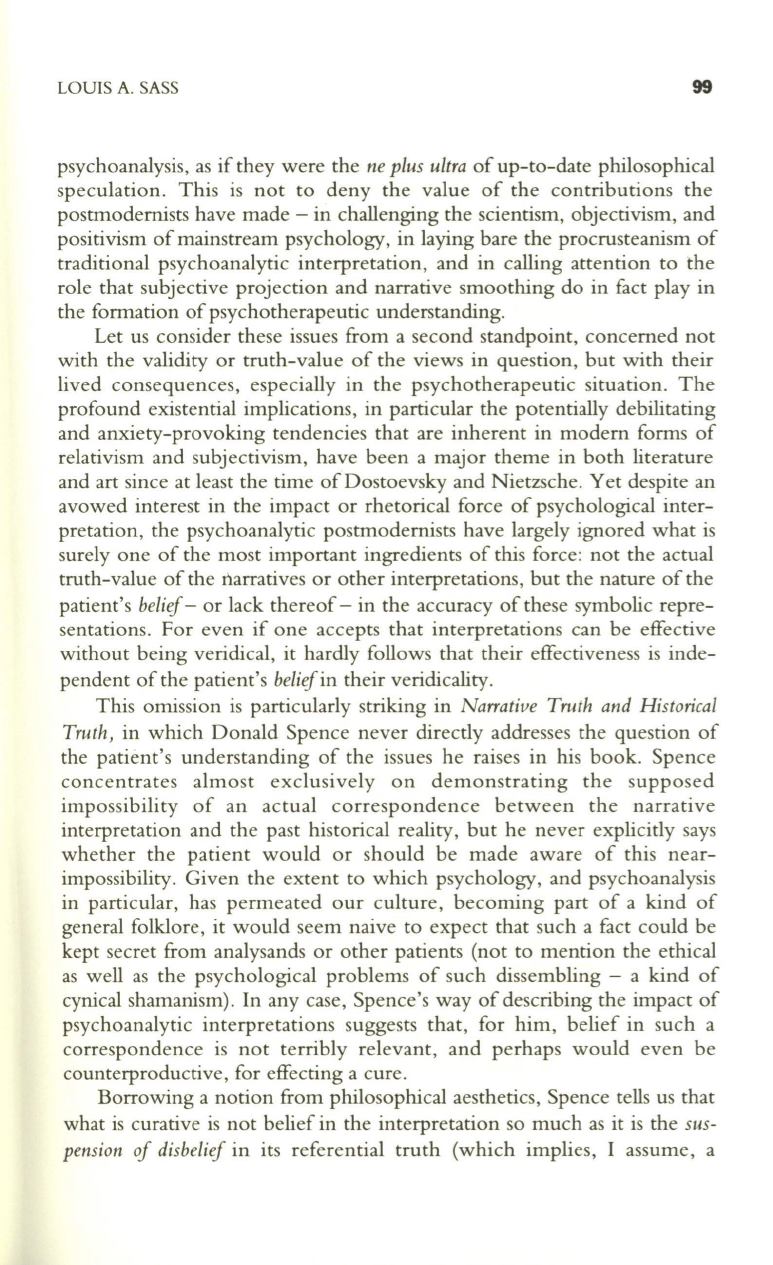
LOUIS A. SASS
99
psychoanalysis, as if they were the
ne plus ultra
of up-to-date philosophical
speculation. This is not to deny the value of the contributions the
postmodernists have made - in challenging the scientism, objectivism, and
positivism of mainstream psychology, in laying bare the procrusteanism of
traditional psychoanalytic interpretation, and in calling attention to the
role that subjective projection and narrative smoothing do in fact play in
the formation of psychotherapeutic understanding.
Let us consider these issues from a second standpoint, concerned not
with the validity or truth-value of the views in question, but with their
lived consequences, especially in the psychotherapeutic situation. The
profound existential implications, in particular the potentially debilitating
and anxiety-provoking tendencies that are inherent in modern forms of
relativism and subjectivism, have been a major theme in both literature
and art since at least the time of Dostoevsky and Nietzsche. Yet despite an
avowed interest in the impact or rhetorical force of psychological inter–
pretation, the psychoanalytic postmodernists have largely ignored what is
surely one of the most important ingredients of this force : not the actual
truth-value of the narratives or other interpretations, but the nature of the
patient's
beliif-
or lack thereof- in the accuracy of these symbolic repre–
sentations. For even if one accepts that interpretations can be effective
without being veridical, it hardly follows that their effectiveness is inde–
pendent of the patient's
beliifin
their veridicality.
This omission is particularly striking in
Narrative Truth and Historical
Truth,
in which Donald Spence never directly addresses the question of
the patient's understanding of the issues he raises in his book. Spence
concentrates almost exclusively on demonstrating the supposed
impossibility of an actual correspondence between the narrative
interpretation and the past historical reality, but he never explicitly says
whether the patient would or should be made aware of this near–
impossibility. Given the extent to which psychology, and psychoanalysis
in particular, has permeated our culture, becoming part of a kind of
general folklore, it would seem naive to expect that such a fact could be
kept secret from analysands or other patients (not to mention the ethical
as well as the psychological problems of such dissembling - a kind of
cynical shamanism). In any case, Spence's way of describing the impact of
psychoanalytic interpretations suggests that, for him, belief in such a
correspondence is not terribly relevant, and perhaps would even be
counterproductive, for effecting a cure.
Borrowing a notion from philosophical aesthetics, Spence tells us that
what is curative is not belief in the interpretation so much as it is the
sus–
pension of disbeliif
in its referential truth (which implies, I assume, a


